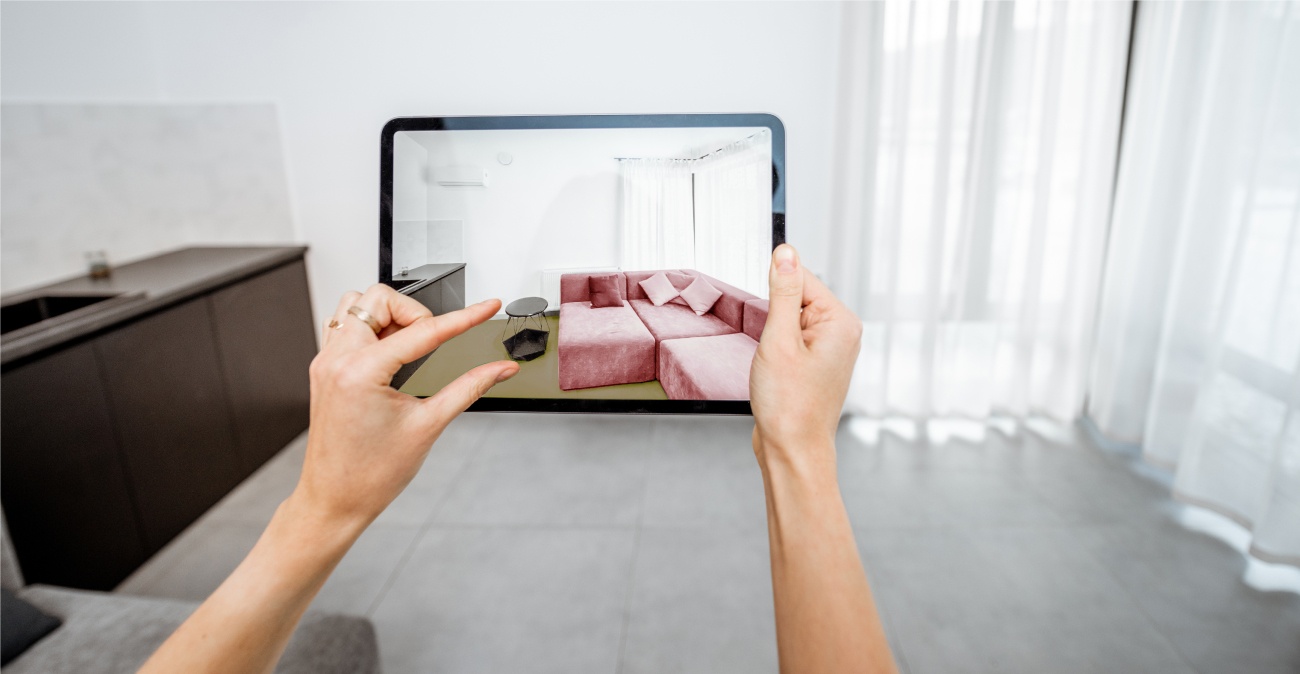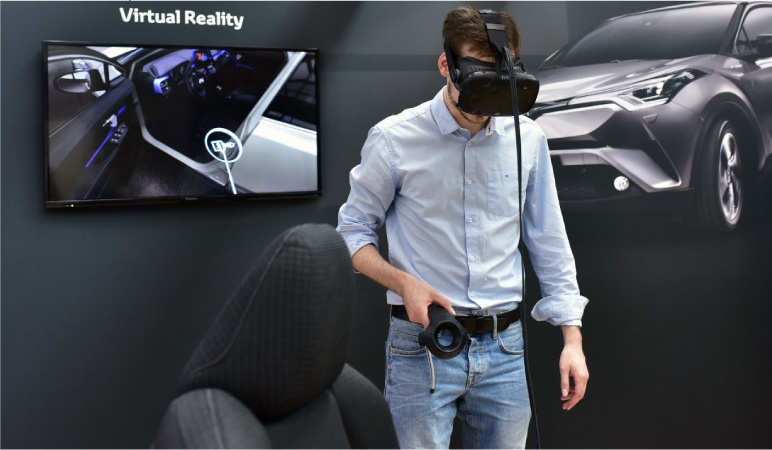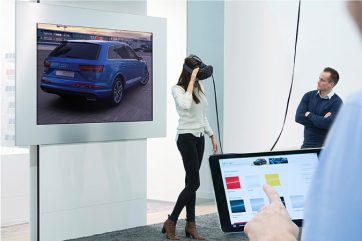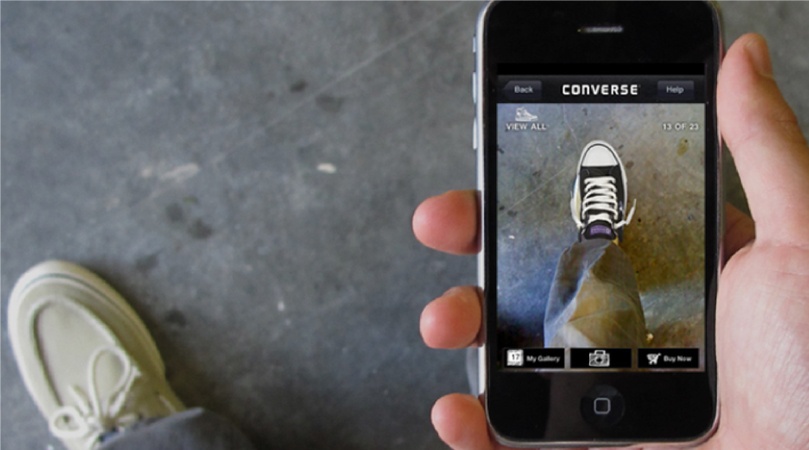
AR&VR
AR/VR
Augmented (AR) and virtual (VR) reality technologies have been around for some time, heavy investment from the likes of Amazon, Google, Facebook, Apple, Lenovo and Samsung have spurred the development of the technologies.
Augmented Reality (AR)
AR, or mixed reality, technology combines digitally created data with that from the physical world. The user sees existing environments overlaid with computer-generated imagery. Accessibility is the main advantage of AR, with most modern smartphones being capable of taking advantage of its functionality through apps.

Virtual Reality (VR)
Although similar, a VR experience takes place in an entirely simulated digital reality, which makes it an excellent medium for 3D media. Users can move in, interact with and manipulate this digital space.
VR typically had a higher cost of entry compared to AR due the requirement of a dedicated VR headset. This is no longer the case as brands such as Google, Facebook and Samsung have made efforts to streamline VR hardware for the end consumer. Digital marketing agencies have also managed to bridge this gap through do-it-yourself headset solutions made with cardboard and other cheap materials.
AR and VR has seen the most widespread use in video games, film and other entertainment. In recent years, these tools have also become an emerging trend within marketing and sales strategies. Creative and digital marketing agencies in Malaysia and Singapore have already begun integrating these technologies on showroom and exhibition floors. Brands who want to provide a unique and engaging experience will seek out creative marketing agencies that can implement these tools in a meaningful way.


Why AR/VR?
AR can take branding materials like business cards and brochures to the next level by adding a virtual component. In this instance, AR is used to transform the marketing message in an interactive manner. Customers are able to scan printed materials with their mobile devices to access a range of features, giving them more information and ways to get in contact with the brand. Static images are transformed into digital displays that seamlessly blend into the real world. Intricate visuals pop out from the advertisement on their smartphone, revealing information such as 3D models, additional text and other visual spectacles.
However, size constraints still prove to be an issue for AR. As brands are limited by a customer’s physical space to display this information. VR offers a wholly digital environment, limited only by the customer’s field of vision. By putting on a VR headset, customers’ head movements are tracked and optional hand controllers allow them to interact with the virtual environment. Giving them a real sense in a simulated reality. With VR, customers can tour a new property development, experience a concept vehicle or be immersed in a virtual presentation in 3D space.
E-commerce and retail
How do these new technologies benefit your business? In e-commerce and retail, AR apps let shoppers interact with products and help in creating personalised shopping experiences. Customers can walk around a store with a smartphone. By pointing their screen at different products, they will see not only prices, special offers and discounts but also nutritional information, material make-up, features and any additional details they wish to know about the product.
Fashion and supermarket brands are expected to benefit the most from this, pushing the boundary of what can be achieved for their AR and VR shoppers. Facilitating virtual clothes fittings, one touch purchasing, packaging and delivery options. Leading to faster purchase decisions, lower purchase returns and greater customer satisfaction. Business may also run entire shops without the need of a physical store, having every step of the buying process in the virtual world.


Real estate
In the real estate market, the internet has quickly become the first place where buyers and renters look for properties. AR and VR can help customers experience homes differently and save time. For prospective investors, AR lets us showcase properties before they have been built or turn 2D housing plans into interactive 3D models. Providing the same visualisation benefits of a physical property mode. VR headsets and 3D imaging of properties have even greater benefits.
Property viewing can be exhausting for both realtors and clients. VR can minimise, and even completely eliminate, the driving and walking to view multiple properties at different locations and the need to remember numerous details about each one. The technology tracks all this information for both parties, leaving the important decision making process to run smoother. A realtor can lead a property tour remotely or have pre-recorded segments that clients can interact with.
Reach is another factor, VR showcases of properties ensure good exposure to your target audience because of its accessibility. This can dramatically reduce the time needed to close a sale.These functions can be applied to a variety of industries, interior design, tourism and travel all benefit from the versatility of AR and VR. Property owners now have full creative liberty to experiment with the design of their homes and holiday-goers can have a taste of what their dream destination will be like.
Simulated reality technologies have been herald as the next big thing in consumer technology. We are seeing the implementation of AR and VR by the movers and shakers in the nation. Honda and Audi use VR during their exhibitions, providings guests with the opportunity to experience the sights and sounds of new concept car interiors. Making the experience informative, entertaining and unforgettable. Spotify has integrated AR elements into their large format advertisements. Audiences can scan the advertisement with their smartphone and be linked into promotions and new music playlists. Creative marketing agencies now offer minimalistic business cards and brochures that can expand into a network of interactive information with AR. In short, this technology is poised to dominate the marketing strategies used by major brands worldwide and Demojo Communication is at the forefront ready to lead the charge.
